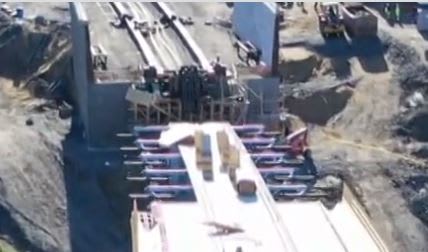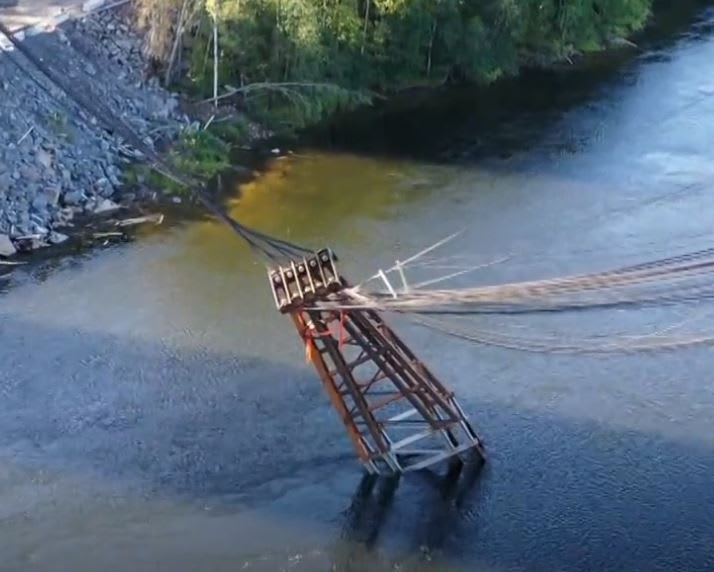-
1
- #21
That bridge is actually less than 3 km from where I live.
The road they are building goes just outside the esidential area I live.
So every single day when I am taking my car somewhere, they have rerouted the road so it is never the same.
This was the launch plan.
The bridge steel construction is such that it must be delivered in smaller parts, 25 pieces with weights between 73 tons and up to 105 tons.
The parts are manufactured in a workshop and transported to the workplace first by barge and then by road.
When the parts arrive at the workplace, they are welded together on our launch plan and when necessarily many pieces are welded together, they are pushed out over the river, or in technical terms, launched out.
The launch is made with large jacks and we also have a type of brake fitted so that the launch can take place in a controlled manner.
"There were two braking devices fitted. - It is a wire brake with hydraulics and then a mechanical wedge that is mechanically driven in by hand but both failed"

This seems to be the king pin.

It also seems that they planned to move the bridge segment in steps of 3 dm at a time.
This happened in the morning so it may have been the first move of that day.
The temperature could have been as low +2 degrees in the night and when it happened around +8-10 mayby.
The sun comes up at 06.00 and the accident happened at 08.30.
My guess is they toke away the mechanical brake wedge away and the hydraulic brakes could not hold the weight for some reason..
And seriously guys..
It's called an erection for a reason. (it goes up !)
I've never heard a man say he got a launch !?!
It might come later though........
And you don't have to tell me, that I'm cheeky, I know I am ;-)
Best Regards A
“Logic will get you from A to Z; imagination will get you everywhere.“
Albert Einstein
The road they are building goes just outside the esidential area I live.
So every single day when I am taking my car somewhere, they have rerouted the road so it is never the same.
This was the launch plan.
The bridge steel construction is such that it must be delivered in smaller parts, 25 pieces with weights between 73 tons and up to 105 tons.
The parts are manufactured in a workshop and transported to the workplace first by barge and then by road.
When the parts arrive at the workplace, they are welded together on our launch plan and when necessarily many pieces are welded together, they are pushed out over the river, or in technical terms, launched out.
The launch is made with large jacks and we also have a type of brake fitted so that the launch can take place in a controlled manner.
"There were two braking devices fitted. - It is a wire brake with hydraulics and then a mechanical wedge that is mechanically driven in by hand but both failed"

This seems to be the king pin.

It also seems that they planned to move the bridge segment in steps of 3 dm at a time.
This happened in the morning so it may have been the first move of that day.
The temperature could have been as low +2 degrees in the night and when it happened around +8-10 mayby.
The sun comes up at 06.00 and the accident happened at 08.30.
My guess is they toke away the mechanical brake wedge away and the hydraulic brakes could not hold the weight for some reason..
And seriously guys..
It's called an erection for a reason. (it goes up !)
I've never heard a man say he got a launch !?!
It might come later though........
And you don't have to tell me, that I'm cheeky, I know I am ;-)
Best Regards A
“Logic will get you from A to Z; imagination will get you everywhere.“
Albert Einstein

![[surprise] [surprise] [surprise]](/data/assets/smilies/surprise.gif)
![[bigsmile] [bigsmile] [bigsmile]](/data/assets/smilies/bigsmile.gif) LOL
LOL